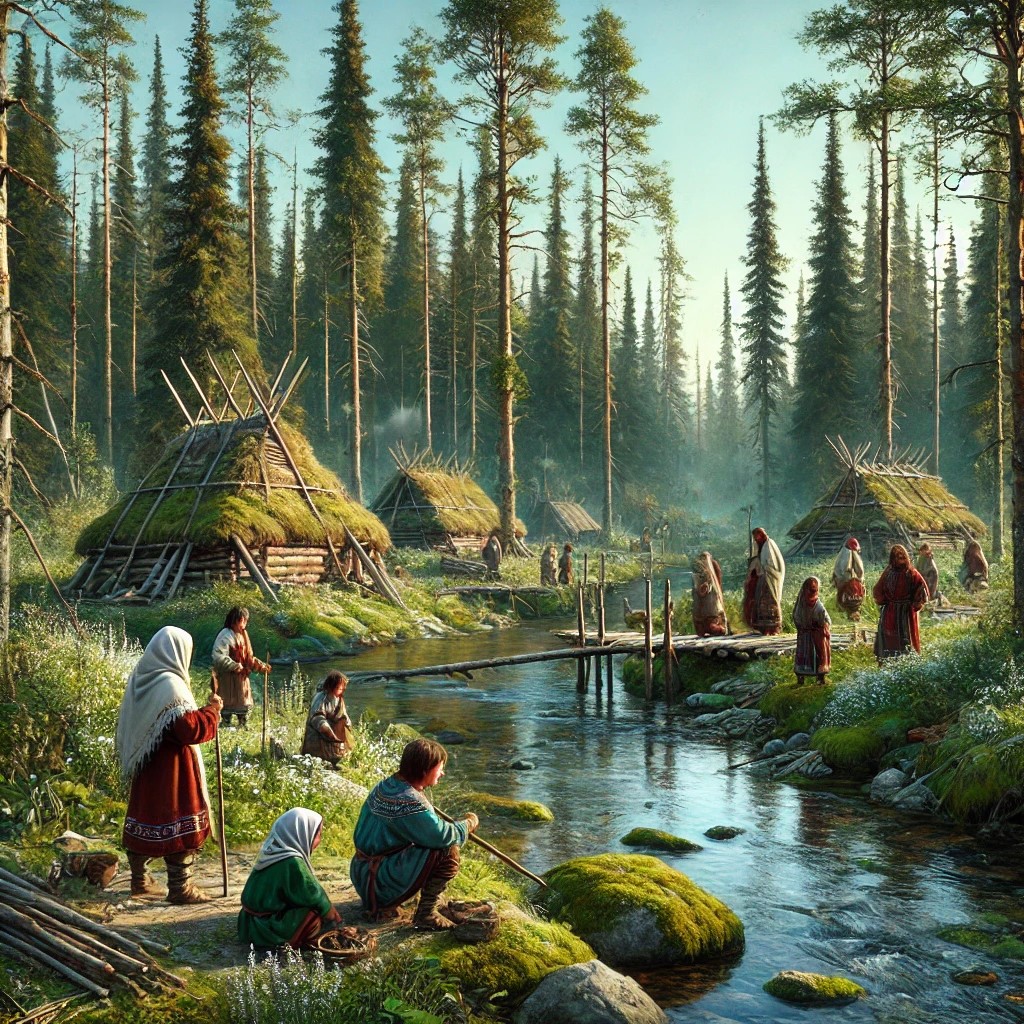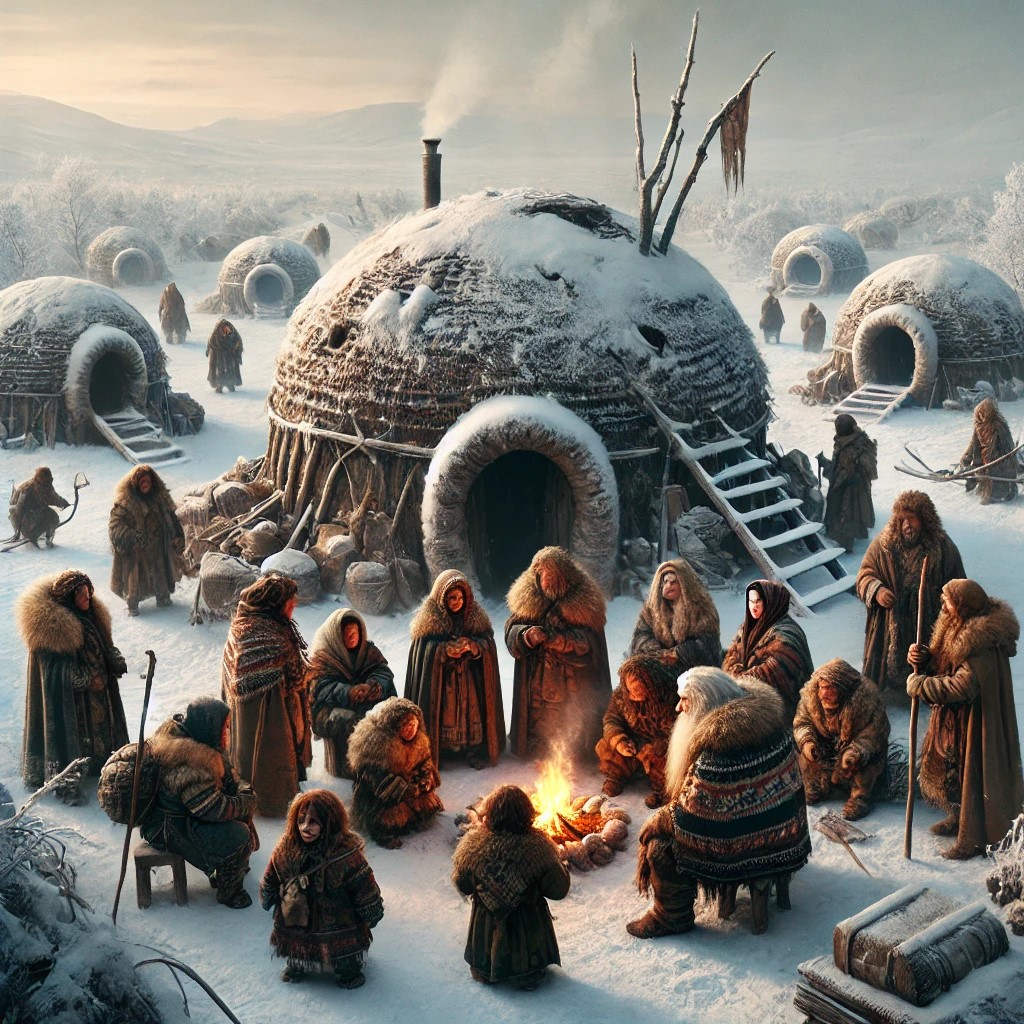Difference between revisions of "Archangel"
Tao alexis (talk | contribs) |
Tao alexis (talk | contribs) |
||
| Line 37: | Line 37: | ||
! Place Name !! Founded | ! Place Name !! Founded | ||
|- | |- | ||
| − | | Archangel<br>Koswick<br>Nitshill<br>Onega<br>Sudborough<br>Underbarrow<br>Yalding | + | | Archangel<br>Koswick<br>Nitshill<br>Onega<br>Sudborough<br>Underbarrow<br>Yalding || 10 |
| − | | | ||
| − | | 10 | ||
|} | |} | ||
[[Category: Places in Russia]][[Category: Incomplete]] | [[Category: Places in Russia]][[Category: Incomplete]] | ||
Revision as of 03:35, 26 February 2025
The County of Archangel is a halfling county and colony on the coast of the White Sea bordered by Egreliia to the west and the gnollish kingdom of Bjarmaland to the south and east. Established as a distant outpost of halfling civilisation, the county has developed into a resilient and self-sufficient territory, thriving despite the challenges of its northern climate and the presence of powerful neighbours. Despite its isolation, Archangel maintains steady contact with distant halfling lands, particularly Breen, importing goods that cannot be produced locally and exporting furs, fish and crafted wares.
Contents
Relations with neighbouring powers are complex. Elvish tribes in Egreliia provide protective support for the area while acting as a sporadic trading partner, while the gnolls of adjoining Glu'Bak are a constant threat. The rugged environment has shaped a hardy and resourceful population, accustomed to enduring long winters, repelling raids, and navigating the political intrigues of rival factions. Though small in size, Archangel is a vital and determined presence in the region, holding its own against larger and more aggressive forces. The area covers some 25.7 hexes, with a population of 23,853.
Geography
Archangel occupies a stretch of cold, windswept lowlands along the southern shore of the White Sea, with terrain consisting of coastal marshes, taiga forests and rolling hills, with numerous rivers and inlets carving through the landscape. The most prominent geographic feature is Bog Marsh Cape, a large, waterlogged expanse that juts between Dvinsk Bay and Onega Bay, covered in peat bogs, stunted trees and winding waterways. The coastline is jagged and irregular, marked by small bays and rocky outcroppings. Ice floes are a common sight, particularly in early spring and late autumn. The waters teem with fish, but navigation remains hazardous due to shifting ice and sudden storms. Inland, the taiga consists of conifers, birch, and willow, gradually giving way to the frozen tundra beyond the county’s borders.
The county is defined by two major rivers, the Dvinsk and the Onega, which flow northward into the White Sea. Their estuaries create fertile deltas that support settlement, though much of the surrounding land remains rugged and untamed. To the west, the land rises gently toward the border with Egreliia, where the forests become denser, while to the south and east, the terrain grows more uneven as it transitions into the harsher uplands controlled by gnolls.
The climate is subarctic, with long, harsh winters and short, cool summers. Snow covers the ground for much of the year, and the White Sea remains frozen for several months, restricting sea travel. Permafrost lingers beneath much of the landscape, particularly in the inland bogs and northern reaches, limiting deep-rooted vegetation. However, during the brief summer, the lowlands burst into life with wildflowers, mosses, and fast-growing shrubs, while rivers swell with meltwater from the uplands.
Culture
Unlike their more pastoral cousins in warmer lands, the halflings here have developed a strong communal spirit centered around survival in the unforgiving climate. Villages and towns are built low to the ground, often partially dug into hills or embankments to retain warmth, with thick, turf-covered roofs and insulated wooden walls. Hearths serve as the heart of every home, and firewood is meticulously stockpiled year-round.
Despite the isolation, Archangel’s halflings maintain a strong oral tradition, with storytelling, music, and folk festivals marking the passage of the seasons. Food is simple but hearty, focused on preservation and sustainability. Smoked fish, salted meats, hardy root vegetables, and thick black bread form the staples of daily meals, while fermented dairy products and strong herbal teas provide warmth and sustenance. Fermented drinks, particularly a potent honey mead, are a key part of social gatherings. In winter, when travel is difficult and the nights are long, communities gather in great halls or communal lodges to share tales of heroes, tricksters, and legendary creatures that stalk the frozen wilds. Carved wooden masks and effigies play a significant role in these traditions, used in rituals to mark important events such as the first snowfall or the return of the sun after the deep winter.
Dress is practical, with heavy woolens, layered furs, and thick leather boots being standard attire. Beaded embroidery and dyed fabrics, often in deep blues and reds, add a touch of vibrancy to otherwise utilitarian clothing. Many halflings wear bone or wooden charms, believed to bring protection against both the elements and the malevolent spirits said to haunt the tundra. While deeply tied to their homeland, the halflings of Archangel remain curious about the world beyond their borders. Travelers and traders, when they arrive, are treated with wary hospitality, and though outsiders may find the locals reserved at first, they quickly warm to those who prove themselves as friends.
History
The arrival of halflings in what would become Archangel began in the a migration spurred by the Breen halflings of the far west. For nearly five centuries, halflings had flourished along the fjords and valleys of Breen, their sturdy shortboats skimming the frigid seas, their settlements nestled between towering cliffs and deep green waters. Yet as their numbers grew, so too did their need for land. The old herding grounds were no longer enough, and the spread of Vikings forced them to travel far afield to find a new foothold.
According to oral tradition, the first halfling vessels sighted the White Sea in the autumn of 1136. The coastline was harsh, an expanse of black pines and frozen marshes, yet beneath the early snows, the land was rich with game, fish, and unspoiled rivers. The explorers, led by a halfling called Jorlen the Farer, pushed inland, navigating the winding channels until they reached the mouth of the Onega River. Here, where the waters ran cold and clear, they made landfall and raised their first winter shelter. They named the place Onega, after the river, believing it a sign of good fortune.
Survival was not assured. The winters were unlike any they had known, long and unrelenting, testing the limits of their endurance. Ice choked the rivers, snow buried their homes, and game proved scarce in the deepest cold. More than once, it seemed the fledgling settlement would fail. But the Breen were seafarers, accustomed to hardship, and they learned quickly. They built stronger lodges, dug deep cellars, and harvested the thick peat of the marshes for fuel. They fished the frozen sea, hunted seals along the ice-bound shores, and traded with distant bands of elves from the southern forests.
For nearly three centuries, Onega stood alone, an isolated outpost on the edge of the known world. The Breen grew hardy and self-reliant, their population steady but small. But the White Sea was not without its dangers. Raiding bands of gnolls and orcs from the inland wastes pressed against their borders, testing their defenses. Through treaties with the elves of Ulthua, the halflings were able to hold their ground, though precariously. If they were to remain, they needed numbers, and so, in the early 15th century, they called upon their kin in Breen, seeking settlers willing to claim new land.
The call was answered. In 1419, a second wave of halfling settlers arrived, carrying tools, livestock, and enough supplies to build a lasting home. They traveled north along the coast and settled on a stretch of sheltered shoreland, where the sea provided ample fish and the inland bogs promised rich peat. They called their new home Sudborough, and from there, the much larger Archangel was founded. Over the following decades, more villages were founded. With the winters so unyielding, every settlement had to be earned.
Shaped by frost and the sea, the Archangel halflings became distinct from their Breen forebears. They built deeper homes, travelled by sled in winter and carved the stories of their past into wood and bone, ensuring their legacy would not be forgotten. By the mid-17th century, Archangel has become a small but determined presence on the White Sea, standing firm against the wilderness that had once threatened to swallow it whole.
Settlements
| Place Name | Founded |
|---|---|
| Archangel Koswick Nitshill Onega Sudborough Underbarrow Yalding |
10 |

